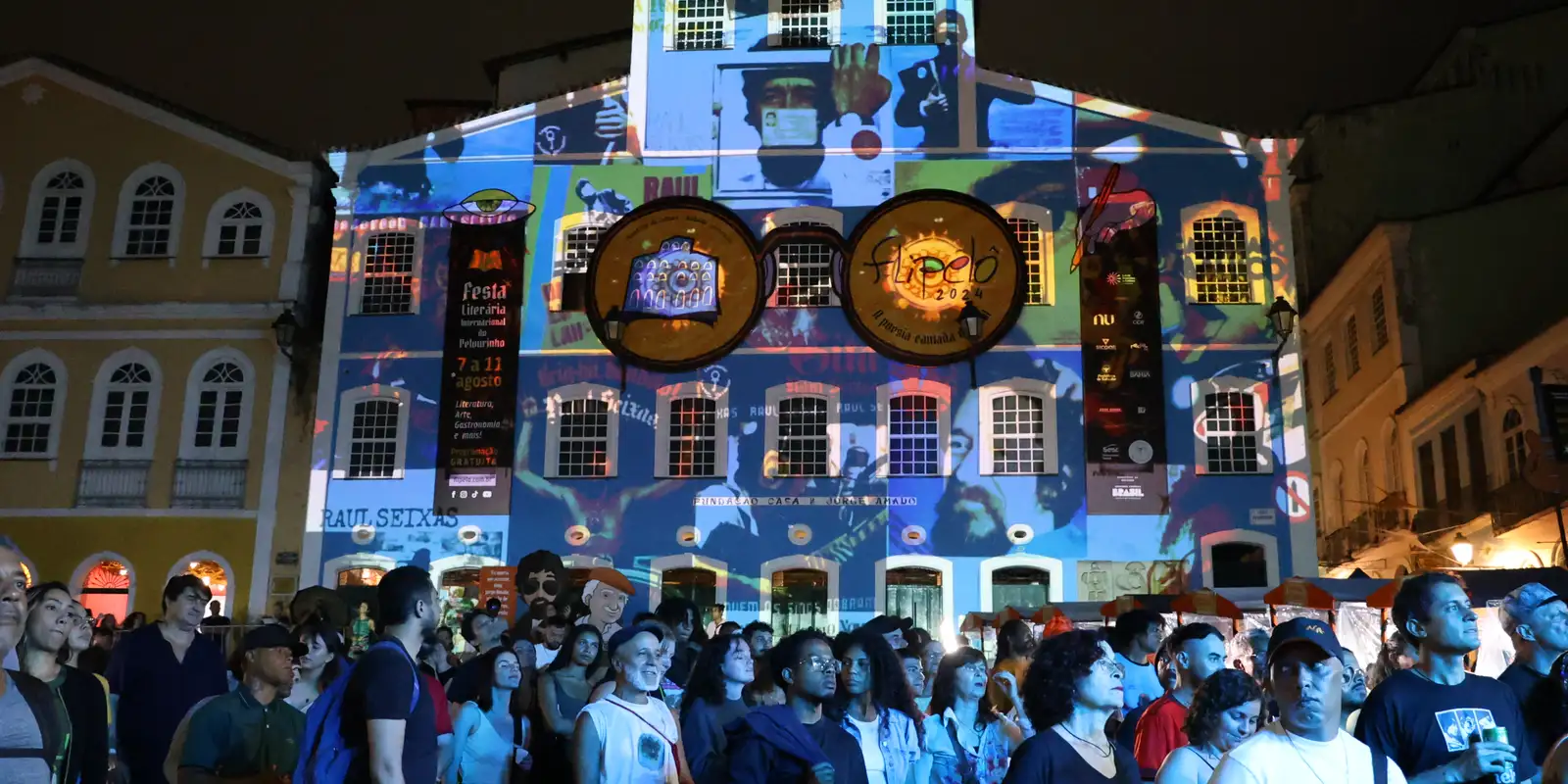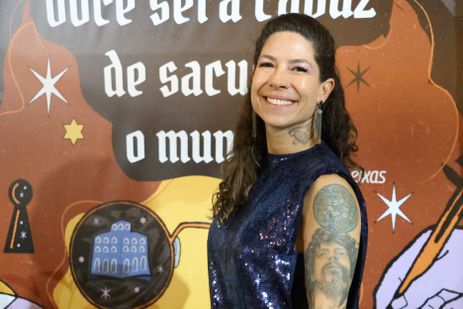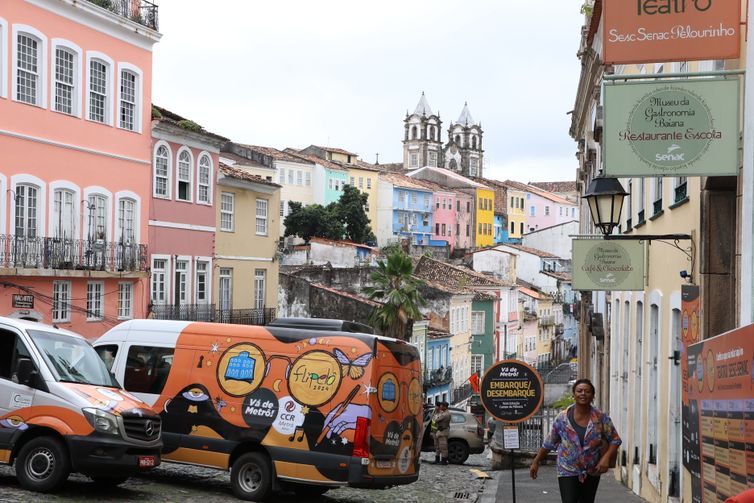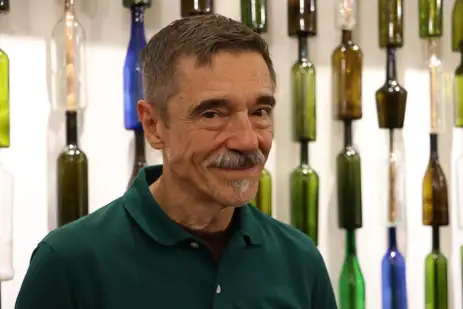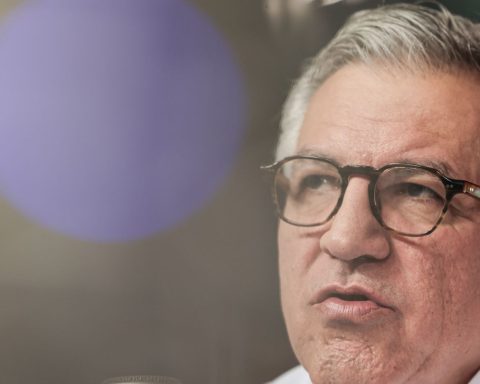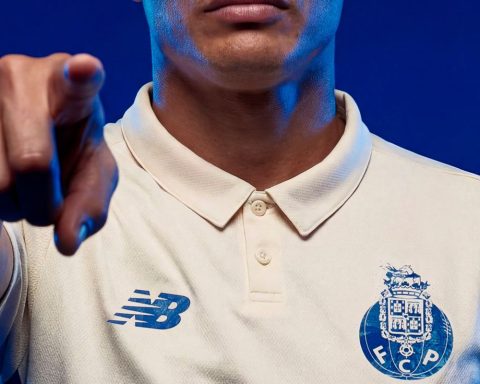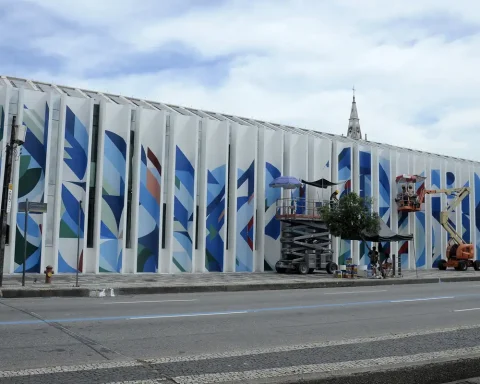Vivi Seixas was only eight years old when her father passed away. In her memories, she remembers a loving father, “who liked to create characters and tell stories”.

Another memorable memory is his beard. “I remember his beard very well, it’s something I’ll never forget. My mother used to say that my father would take my little hand when I was little, put it in his beard and tell my mother: ‘so she’ll never forget me!’ And I’ve never forgotten it, it makes me very emotional,” she said in a report for Brazil Agency.
“To this day, I still feel my father very present. He’s been gone for 35 years, but there’s not a day that goes by in my life that someone doesn’t talk about Raul, or that I don’t get into a taxi and Raul is playing, or that I pass by a newsstand and there’s not a Raul sticker. I can’t forget him, he’s very much alive inside me.”
DJ and music producer, Vivi Seixas is the daughter of the “crazy beauty”, the “walking metamorphosis”, the “I am”: the poet, singer, composer and father of Brazilian rock, Raul Seixas (1945-1989). He was chosen to be honored at this year’s edition of the Pelourinho International Literary Festival (Flipelô), which began yesterday (7) in Salvador.
The daughter was the special guest of show who opened the event last night, on a stage set up in Pelourinho, in front of the Fundação Casa de Jorge Amado, where images of his father were projected, illuminating the mansion.
“I was 8 years old when my father passed away. And I would have loved to have spent more time with him. But I have many memories of a very loving, very funny father who liked to create characters for me and tell me stories. I just played [na Flipelô] and I am very excited to pay this tribute to him, in his land,” she said.
After the show she did at Flipelô, Vivi ended up remembering a show where she, when she was still little, saw her father play at Maracanã, in Rio de Janeiro.
“I think it was Christmas, a celebration that had Santa Claus. I remember being a little girl screaming, ‘Daddy!’, when he appeared [no palco]”.
Shake the world
The tribute paid to Raul Seixas at Flipelô, an event that Vivi’s mother, Kika Seixas, also participated in, anticipates the celebrations of the musician’s 80th birthday, on June 28, 1945. According to Vivi Seixas, in 2025, the expectation is to hold the “greatest tribute” ever made to her father: Baú do Raul.
“Baú do Raul is a tribute that has been going on since 1993. My mother started this tribute, where several very important artists sing Raul. And we want to make the biggest of all, free, open to the public here in Salvador.”
The idea is to celebrate the legacy of the father of rock Brazilian. “My father was simply one of the greatest composers and artists that Brazil has ever had. I know I’m biased, but someone like him is yet to be born. What I think is really cool about Raul is that he reaches out to everyone from children to the elderly, from all social classes, from all musical styles. When I come here to Salvador, when I walk around the hip hoppeople like Raul. When I go to the samba, reggaeeveryone likes Raul. He is very respected by all the tribes”, said the DJ.
Beginning, end and middle
Raul Seixas had a short career, lasting only 26 years. During this period, he released 17 albums that defined Brazilian rock. “Raul appeared in the late 60s and established himself as a composer, singer and performer. As he himself said, he didn’t consider himself a singer and composer. He said he used music to express what he thought. I think there’s an irony in that, right? Bahians are very ironic,” said musician Charles Gavin, from Titãs, who was invited to moderate a panel about Maluco Beleza at Flipelô.
In conversation with the reporter of Brazil Agency during the opening of the literary festival, Gavin stated that one of Raul’s great legacies is to have been so influential in rock as in Brazilian music as a whole.
“Although he used the speech of the rock and rolldespite all the idolatry he had for Elvis and other names from that generation of North American music, he never took his foot off Brazilian music, especially music produced in the Northeast. When he launched himself as a composer with Let Me Sing My Rock ‘N’ Rollthis is a song that is half rock and half baião”, says Gavin.
“From the beginning – and I think until the end of his career – he always proposed to position himself this way: he was a creation of the rock and rollbut also a creation of Brazilian music. I think that this is the great message he gave and that some people still don’t seem to understand.”
Gavin says that this characteristic of Raul influenced several Brazilian bands and musicians. “He was a very controversial and contradictory guy. At the same time that he said he loved that period in the United States, he positioned himself as a Brazilian and not as someone who just wanted to repeat or reproduce the language that was there. He sought a language for Brazilian music. Just like Novos Baianos did this, like Mutantes did this and like my generation, from rock Brazilians from the 80s also tried to do this and in a way they succeeded.”
Walking metamorphosis
Raul Seixas died in 1989. But his music and his thinking remain very current, with audiences of shows crying out, to this day: “Play Raul!”
“My father is still more alive than many people. His songs are still very relevant today and I think the secret is that he spoke in such a profound way but, at the same time, in a very simple way that everyone can understand,” says Vivi Seixas.
For Charles Gavin, Maluco Beleza’s legacy goes beyond the songs he wrote. “[Ele continua] frighteningly current. If Raul were here today, in front of us, what would he say, for example, about social networks, what would he say about the digital manipulation done through fake news? And what else would he say about the arrival of artificial intelligence? I believe he has already talked about it, we just didn’t get it, we didn’t understand it.”
“Raul has already spoken [na música Metrô Linha 743] that the brain is served on a plate, ‘a living brain in vinaigrette’. And what happens to these fake news That’s exactly it, right? A digital manipulation of the reconfiguration of our intellectuality, of our mentality. If we read his texts, you’ll see that he was already talking about things that would come years later. But futurists are like that, prophets are like that. They speak in one way and 100 years later you understand. Raul had a bit of that, of being a prophet and a futurist,” he added.
For those who want to understand the present or envision the future, Gavin leaves a message: “This is a good time for us to analyze Raul’s texts now and compare them with what we are seeing in the world.”
Flipelô is free and runs until August 11th. For more information about the event and the schedule, Click here.
*Reporter and photographer Rovena Rosa traveled at the invitation of the CCR Institute, sponsor of Flipelô
